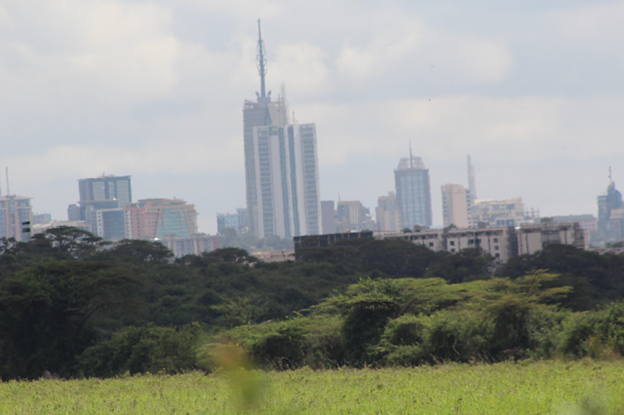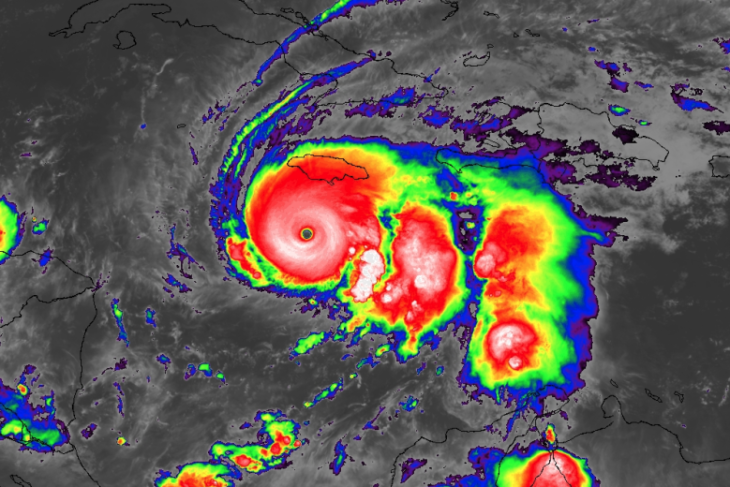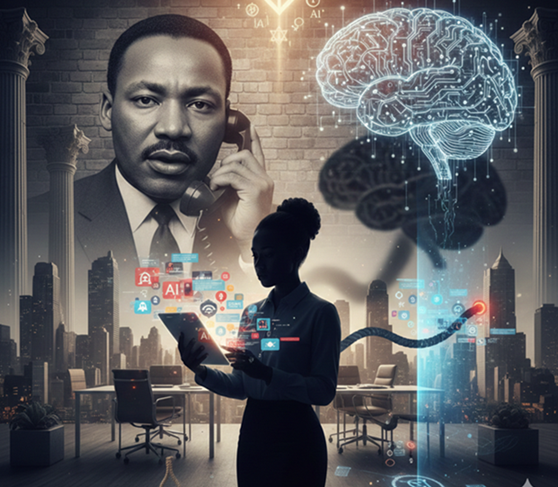
Nairobi, the capital of Kenya, is a huge metropolis of approximately 696 sq kms, (269 square miles) and a population of between 4 and 6 million (depending on who you ask) is a very modern city. I found it quite cool during the rainy season when I visited, but that is understandable, as the elevation is almost 6,000 feet (1,795 metres) above sea level.
From all appearances, this city has a large middle to upper class, if the houses in the suburbs and traffic jams all over the city caused by the vast number of high-end vehicles and SUVs is anything to go by. I was quite overwhelmed by the massive construction of roads, high-rise office buildings and apartments which was taking place all around. That encouraged a fleeting question in my mind as to why such a huge county needed so many high-rise apartments. But I suppose it has a lot to do with the time it takes to commute and security concerns. The security business is booming there, and even in the most affluent areas, you see massive walls topped with electric fences.
This is not necessarily a reflection on the current crime situation in Kenya itself though, for apparently the real threats they face comes from outside. Especially from groups such as Al Shabaab, whose well-armed gunmen, carried out a midday attack in 2013 at the upscale Westgate Shopping Mall. That assault left 71 people dead and some 200 injured. That foreign terrorist group is also blamed for another attack in January 2019, in the West Lands section of Nairobi. This attack left 20 people dead. (These attacks are said to be as a result of those Islamic militants being upset with Kenya’s involvement in their neighbour, Somalia’s, civil war)
As a result, one gets the impression that there is a high security alert everywhere. So, at the numerous exclusive shopping centres and malls, security is ultra-tight. One therefore cannot enter, without vehicles being thoroughly searched and people having to go through metal detectors.
On the other hand, the fact that one sees virtually all unused land on the roadsides being fully cultivated by people who set up stalls right there to sell their produce, but leave everything untended in the nights, gives the impression that theft in that city is minimal!
The city seems to be very well laid out, with numerous attractive, architecturally designed high-rise buildings and an ample amount of well-tended green spaces. Even on Ndong Road. This takes you to the very upscale, mainly white area known as Karen. But all along that road where you can find almost every manufactured product, from metal works to flower pots for sale on the sidewalks, everything looks beautiful, safe and orderly.
In terms of service, my experience is that in Nairobi there are no goods or services that are available in any major first-world city that you cannot find there.

In fact, I was very impressed that while when I was travelling to Kenya and needed a COVID PCR test no older than 96 hours, I could not find a place in New York that could guarantee me the results in less than 24-48 hours. However, for the return journey I was able to get an internationally recognized test result in Nairobi in 12 hours!I was also impressed with their sophistication in doing business, as it is almost a cashless society.
Very few places, outside of tourism entities, accept United States dollars as they use the Kenyan Shilling. Also, many business establishments have signs saying “No cash accepted.”
Making payments for anything, from a pound of flour to high priced products, is easy though. All it requires is to transfer the funds to thephone number of the seller. That takes seconds!
Of course, debit and credit cards are also accepted.
The roads are generally in excellent condition. They have installed lots of speed bumps on every road, and it seems to have greatly decreased the level of accidents. (I didn’t see one accident in the city in two weeks!)
I was a bit disappointed though, with the lack of sidewalks in the upscale neighbourhoods where workers generally must walk to their jobs. They therefore must trudge on muddy tracks to get to their places of employment.
Also, in the low-income sections of the city, starting near Two Rivers Mall, the largest shopping centre in East Africa, the main roads are excellent, but side roads are unpaved and all appeared muddy during this the rainy season.
With reference to third world in the title therefore, it seemed clear that on the fringes of the city, the same attention to building regulations and good infrastructure was lacking.

There was a marked difference in the transportation system in the two Nairobis.
This city does not appear to have a central transportation system. Apart from private vehicles, commuting is via foot; minibuses; dray carts; big buses (mainly for long distance travel); scooters (called piki piki); bike taxis called boda boda and tuk tuks.
Tuk tuk is a vehicle converted from a humble three-wheeled scooter.

They play a major role in the transportation system. Metal bodies are welded on the scooter to transform them into passenger vehicles carrying up to five people, or to carry commercial goods.
Regardless of the obvious differences in the appearance in the various sectors of this enormous metropolis, Nairobi is a modern, developed, bustling, city with services and technology as advanced as any in the first world.
This is so, contrary to the impression given by the western press when it portrays life everywhere in Africa!



